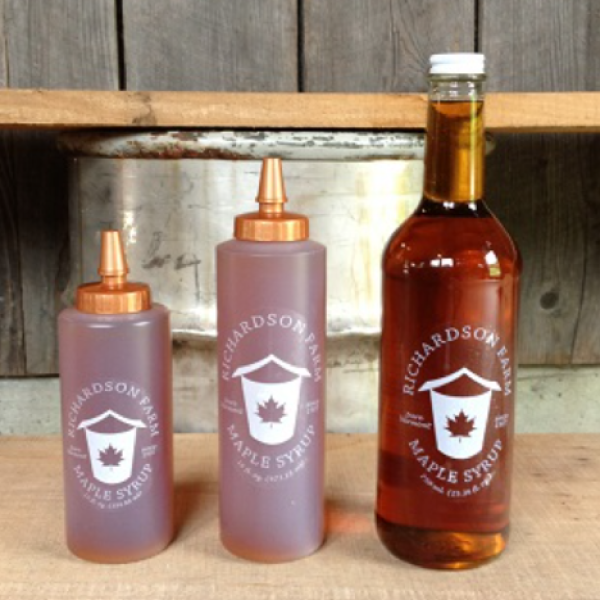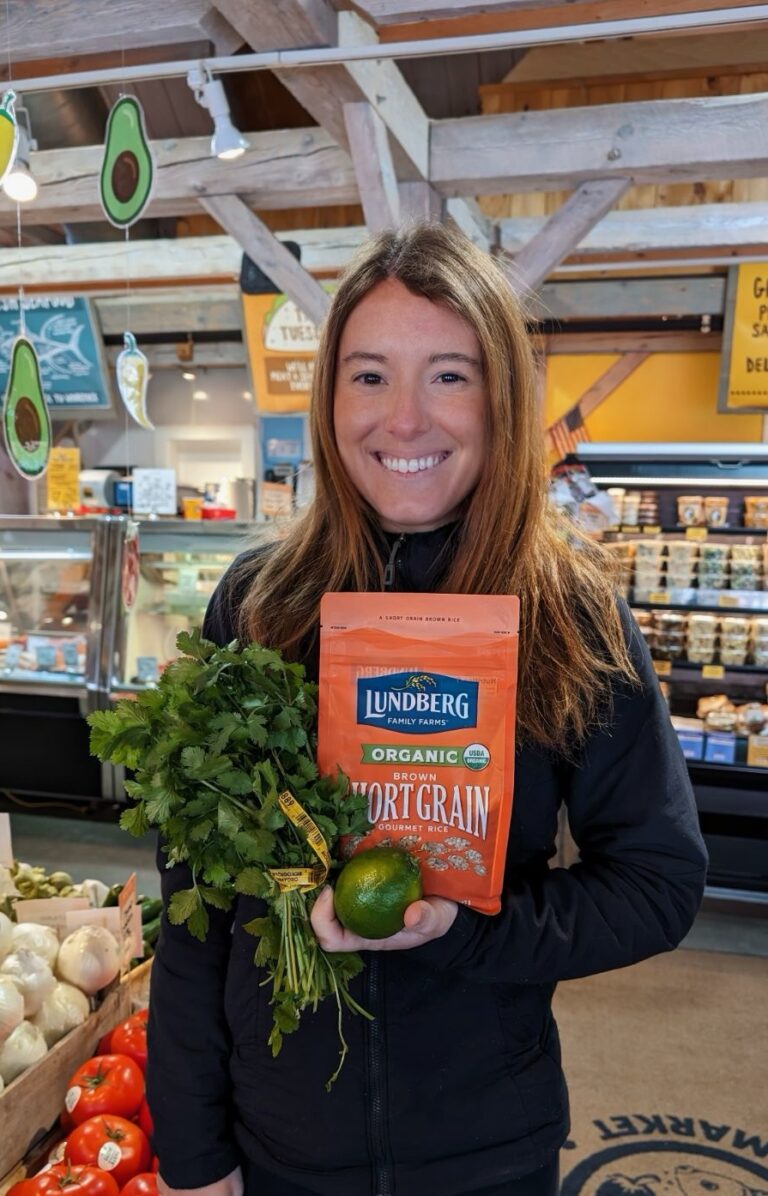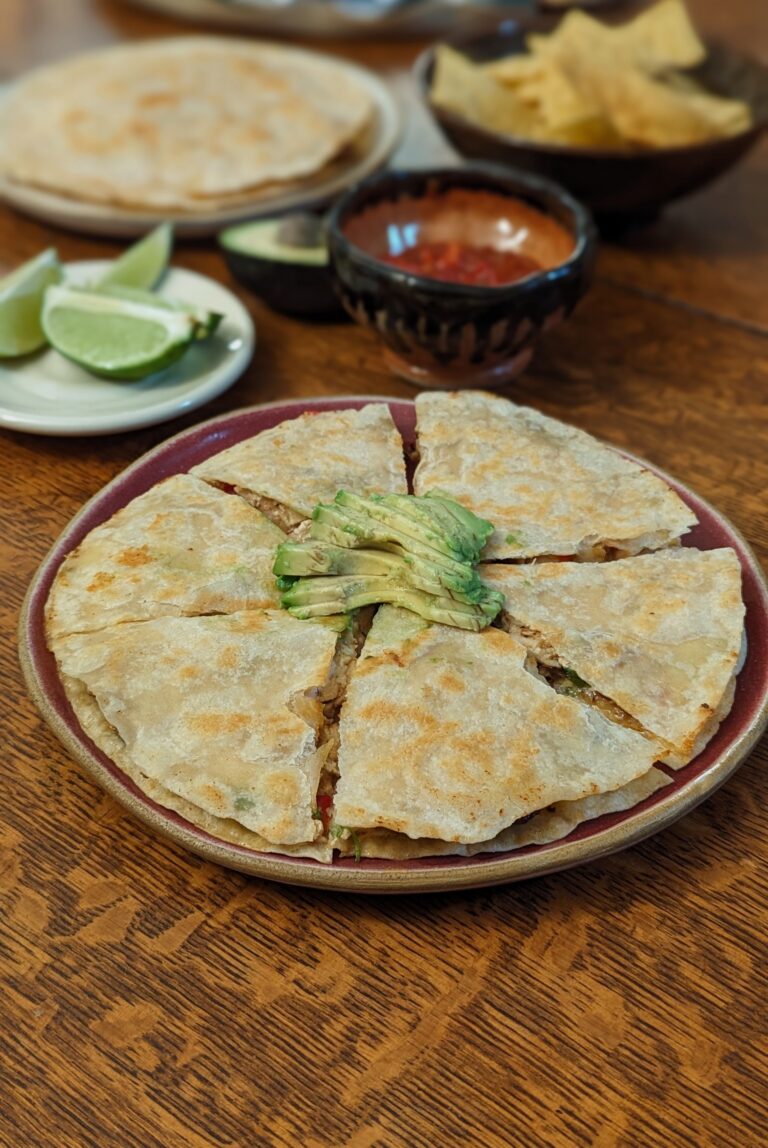
We are blessed to live where maple trees grow. In the fall, our maple trees provide us with vibrant colors sprinkled along our winding roads, pastoral meadows, and rolling Green Mountains. And, in the first few months of the year, the sap starts flowing. If there’s one thing synonymous with Vermont, it’s maple syrup. Our tiny state produces the most maple syrup of any state in the U.S. and is second only to Québec in world production.
This sugaring season we caught up with two of our local maple producers who were gracious enough to answer our questions during their busiest time of the year.
Today we are featuring a Q-and-A with Reid from Richardson Family Farm out of Hartland, VT. Richardson Farm Maple provides maple syrup to both our Woodstock and Waterbury locations.
Q. Can you give us a short history of your business? Is there a family component?
A. We have been in Hartland since 1905 when Great Grandparents James and Lexi Richardson moved up from Chester and purchased the farm. Grandparents Floyd and Veneita Richardson added acreage to the farm, as did their children. All generations have made maple syrup here, but it was brothers James and Gordon who really turned it into a business and tapped thousands of trees.
Today we tap just under 12,000 trees and all the sap from those trees runs downhill to our sugarhouse. We utilize the latest technology in the process of collecting and processing maple sap into syrup. That technology includes a vacuum system to collect the sap; reverse osmosis to remove water from the sap before we boil it; a wood-burning, gasifying arch to cook the syrup on; and a giant array of solar panels to provide all the electricity that we need to do the job. All the components have an eye towards efficiency and reduction of labor. Conveniently, they also reduce our carbon footprint.
Q. When do you start tapping? How many trees do you tap?
A. We started tapping in the last week of January. We have 11,600 taps.
Q. How many gallons of syrup are you projecting to produce?
A. I’m hoping to produce 6,000 gallons, but Mother Nature is in charge of that. We have made as much as 7,400 gallons and as little as 3,600 gallons from the same number of taps.
Q. How do you think the sugar content this year compares to past years?
A. The sugar content is down this year as compared to previous years; however, to date, we have not had as many freeze-thaw cycles as we would normally get. There was a nine-day stretch earlier in the season when it didn’t freeze at night, but the sap just kept running.
Q. How has the weather affected sugaring?
A. Oddly, knock on wood, the weather has been good enough to have a good season so far. The long stretch with no freezing was unsettling, and we will likely get another. But, at the moment, we are in a good stretch of freezing nights and warm days. Temps over sixty during the day are unsustainable with such a fragile product as tree sap.
Q. Can you tell us about being Audubon certified as a bird-friendly habitat?
A. The designation is one that we have worked towards—without knowing—for a very long time. Our farm and forest land is in the state’s Use Value Appraisal program and is also conserved with the Upper Valley Land Trust. Both programs require a forest management plan to be in place. Within the forest management plan, goals need to be set by the landowners. Our primary goal has always been to maintain a sugarbush where limited cutting is done.
We have learned over the years that a monoculture (only one species of tree, in this case, maple) is not a healthy forest. While it sounds ideal, it is not very resilient. Forests with a diverse array of tree species have fewer forest health problems and are better able to adapt to the stresses of climate change. The goals that we set and the habitat that we have been able to create happen to be just what birds thrive in. One area that we will work to improve on is leaving more dead wood in the woods. Both on-the-ground and standing dead wood provide great nesting sites and food resources for all birds. We are proud to be recognized for our efforts!
And before you think that maple season is the only busy season at Richardson Family Farm, keep reading about their special connection with our Market! During the summer, Richardson Family Farm manufactures split-rail fencing. Reid in our produce department noted that they made the split-rail fence surrounding our Woodstock location’s parking lot! They also raise a herd of Jersey cows who produce milk for Cabot cheese. There is never a dull moment at the Richardson Family Farm!

